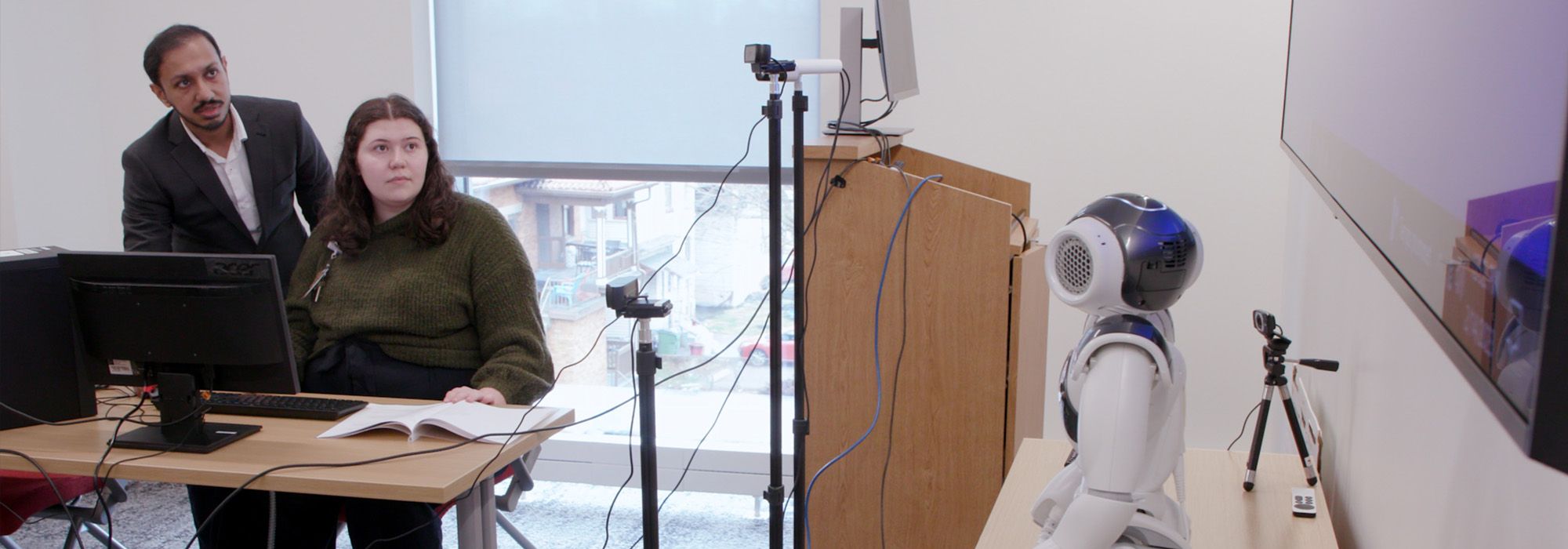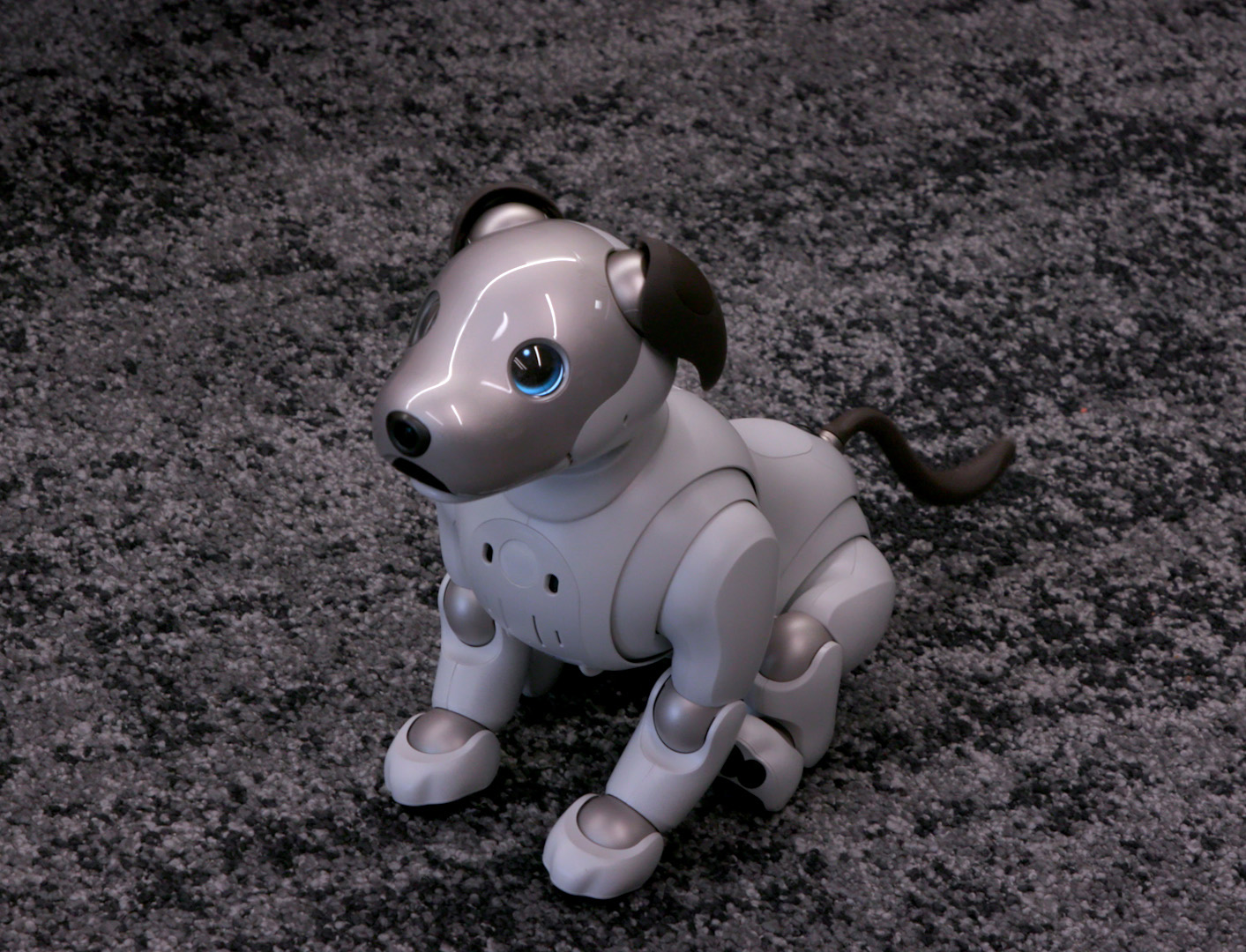
Robot Research
by Phil Saken
Apathy – a widespread issue for older adults living in long-term care (LTC) facilities – is getting some state-of-the-art attention from researchers at the College of Nursing and Vanderbilt University.
A five-year, $3.13 million grant from the National Institutes of Health/National Institute on Aging (NIH/NIA) supports work by College of Nursing research professor Lorraine Mion, PhD, RN, FAAN, associate professor Judith Tate, PhD, RN, FAAN, research professor Alai Tan, PhD, and partners at Vanderbilt University to develop robotic systems that help address social, cognitive and physical needs for people experiencing apathy.
According to Mion, apathy – a lack of feeling or emotion, or lack of interest in goals – affects approximately 70% of residents in LTC facilities. “Apathy is common among older adults with serious consequences, including further cognitive decline, functional deficits, reduced quality of life and increased mortality,” Mion said. “Not only does apathy negatively impact the older adult, but also family and healthcare staff. It produces major stress, burden and frustration.”
“Wild success would be demonstration that these robotic systems are effective in reducing apathy among older adults, while at the same time being usable by long-term care staff or visiting family members.”
– Lorraine Mion
 The multidisciplinary project engages nurses, engineers, occupational therapists, physicians, a health services researcher and an advisory panel of long-term care experts. In the randomized controlled trial starting this spring in two central Ohio LTC facilities, Mion explained, a group of LTC residents will spend four weeks with a humanoid robot and four weeks with a robot that resembles a small dog.
The multidisciplinary project engages nurses, engineers, occupational therapists, physicians, a health services researcher and an advisory panel of long-term care experts. In the randomized controlled trial starting this spring in two central Ohio LTC facilities, Mion explained, a group of LTC residents will spend four weeks with a humanoid robot and four weeks with a robot that resembles a small dog.
These robots can help facilitate social interaction between residents, and that helps their caregivers, too. Ritam Ghosh, a PhD student in Vanderbilt University’s Department of Electrical Engineering, said they are designing activities the robots can lead so that residents “can collaborate with their peers and just spend some time together, maybe initiate some conversations and hopefully reduce their apathetic symptoms.”
“We have designed a variety of activities that require two people to collaborate with one another,” Mion said. The participants in these fun activities have to use increasing levels of mental and physical effort and collaborate to succeed.
The robots coach and encourage people to participate in the games, which take place in a non-immersive virtual reality displayed on a TV or computer monitor. One of the activities is a fishing game. Two adults sit near a monitor that shows fish swimming in a pond. The participants sit at an angle, facing slightly toward each other, which encourages them to talk. A robot stands next to the monitor and provides instructions about how to play the game. One person uses a wand that is a virtual reality fishing pole to cast a line to catch a fish. The other person uses their own wand to transfer the fish to a net and then place the fish in a bucket. “At the easiest level, only a few fish swim slowly and only one bucket is there. As the activity progresses in difficulty, multiple fish swim more quickly and there are also non-fish objects, such as bottles or tires. There are two buckets and the person must place the fish in the correctly colored bucket,” Mion explained. While participants help each other nab the fish, the robot cheers them on, reminds them of what to do and asks partners to help each other.
“Once we have it fully dialed in,” Ghosh added, “the older adults can use these like a shared facility resource, just like participants play bingo.”
Mion, who has been collaborating with Nilanjan Sarkar, PhD, at Vanderbilt for 12 years on socially assistive robot technology, is very hopeful that their work can showcase the success, scalability and sustainability of the robots to help older adults, especially those at risk for Alzheimer’s and related dementias.
“Wild success,” Mion said, “would be demonstration that these robotic systems are effective in reducing apathy among older adults while at the same time being usable by long-term care staff or visiting family members.”

